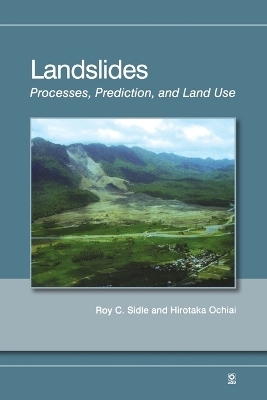
Landslides
American Geophysical Union (Verlag)
978-0-87590-322-4 (ISBN)
Landslides are a constant in shaping our landscape. Whether by large episodic, or smaller chronic, mass movements, our mountains, hills, valleys, rivers, and streams bear evidence of change from landslides. Combined with anthropogenic factors, especially the development and settlement of unstable terrain, landslides (as natural processes) have become natural disasters.
This book charts our understanding of landslide processes, prediction methods, and related land use issues. How and where do landslides initiate? What are the human and economic consequences? What hazard assessment and prediction methods are available, and how well do they work? How does land use, from timber harvesting and road building to urban and industrial development, affect landslide distribution in time and space? And what is the effect of land use and climate change on landslides?
This book responds to such questions with:
• Synopses of how various land uses and management activities influence landslide behavior
• Analyses of earth surface processes that affect landslide frequency and extent
• Examples of prediction techniques and methods of landslide hazard assessment, including scales of application
• Discussion of landslide types and related costs and damages
Those who study landslides, and those who deal with landslides, from onset to after-effects—including researchers, engineers, land managers, educators, students, and policy makers—will find this work a benchmark reference, now and for years to come.
Roy C. Sidle is the author of Landslides: Processes, Prediction, and Land Use, published by Wiley. Hirotaka Ochiai is the author of Landslides: Processes, Prediction, and Land Use, published by Wiley.
Preface vii
1. Introduction and Overview of Landslide Problems 1
Overall Significance of Landslides 2
Distribution of Landslide Hazards Worldwide 9
Loss of Human Life 10
Economic Consequences 13
Examples of Detailed Economic Analyses of Landslide Damages 15
Other Environmental Impacts 20
2. Characteristics of Various Types of Landslides 23
Classification Systems 23
Broad Functional Categorization of Mass Wasting Processes 24
3. Natural Factors Influencing Landslides 41
Geological Factors 41
Geomorphic Factors 55
Hydrologic Factors 67
Seismicity 110
Volcanic Activity 117
4. Landslide Analysis 121
Analysis of Stresses Within Slopes and Initiation Mechanisms of Landslides 121
Quantifying Landslide Trigger Mechanisms 124
Primary Causes of Landslides 129
Problems in Applying Theoretical Stability Analysis to Natural Hillslopes 134
Hazard Assessment and Prediction Methods 139
Overview of Techniques and Methodologies 139
Terrain Hazard Mapping 139
Simple Rainfall-Landslide and Earthquake-Landslide Relationships 145
Multi-Factor, Empirical Landslide Hazard Assessment 150
Distributed, Physically Based Models 155
Overview of Landslide Hazard Assessment and Prediction Methods 160
Land Use and Global Change 163
Timber Harvesting 163
Roads and Other Transportation Corridors 183
Conversion of Forests to Agricultural Lands and Plantations 203
Management Effects 203
Control and Avoidance Practices Amidst the Politics 206
Steepland Grazing and Grasslands 209
Management Effects 209
Avoidance and Control Practices 211
Fire 213
Management Effects 213
Avoidance and Control Practices 216
Urban, Residential, and Industrial Development 217
Background and Vulnerability 217
Direct Effects 219
Avoidance and Mitigation Measures 223
Urban planning and regulation 224
Control and mitigation measures 229
Mining 230
Tourism and Recreation 235
Global Climate Change 236
7. Summary 239
Notation 243
References 247
Index 307
| Reihe/Serie | Water Resources Monograph |
|---|---|
| Sprache | englisch |
| Maße | 154 x 230 mm |
| Gewicht | 445 g |
| Themenwelt | Naturwissenschaften ► Biologie ► Ökologie / Naturschutz |
| Naturwissenschaften ► Geowissenschaften ► Geologie | |
| Naturwissenschaften ► Geowissenschaften ► Geophysik | |
| Naturwissenschaften ► Geowissenschaften ► Hydrologie / Ozeanografie | |
| ISBN-10 | 0-87590-322-3 / 0875903223 |
| ISBN-13 | 978-0-87590-322-4 / 9780875903224 |
| Zustand | Neuware |
| Haben Sie eine Frage zum Produkt? |
aus dem Bereich


